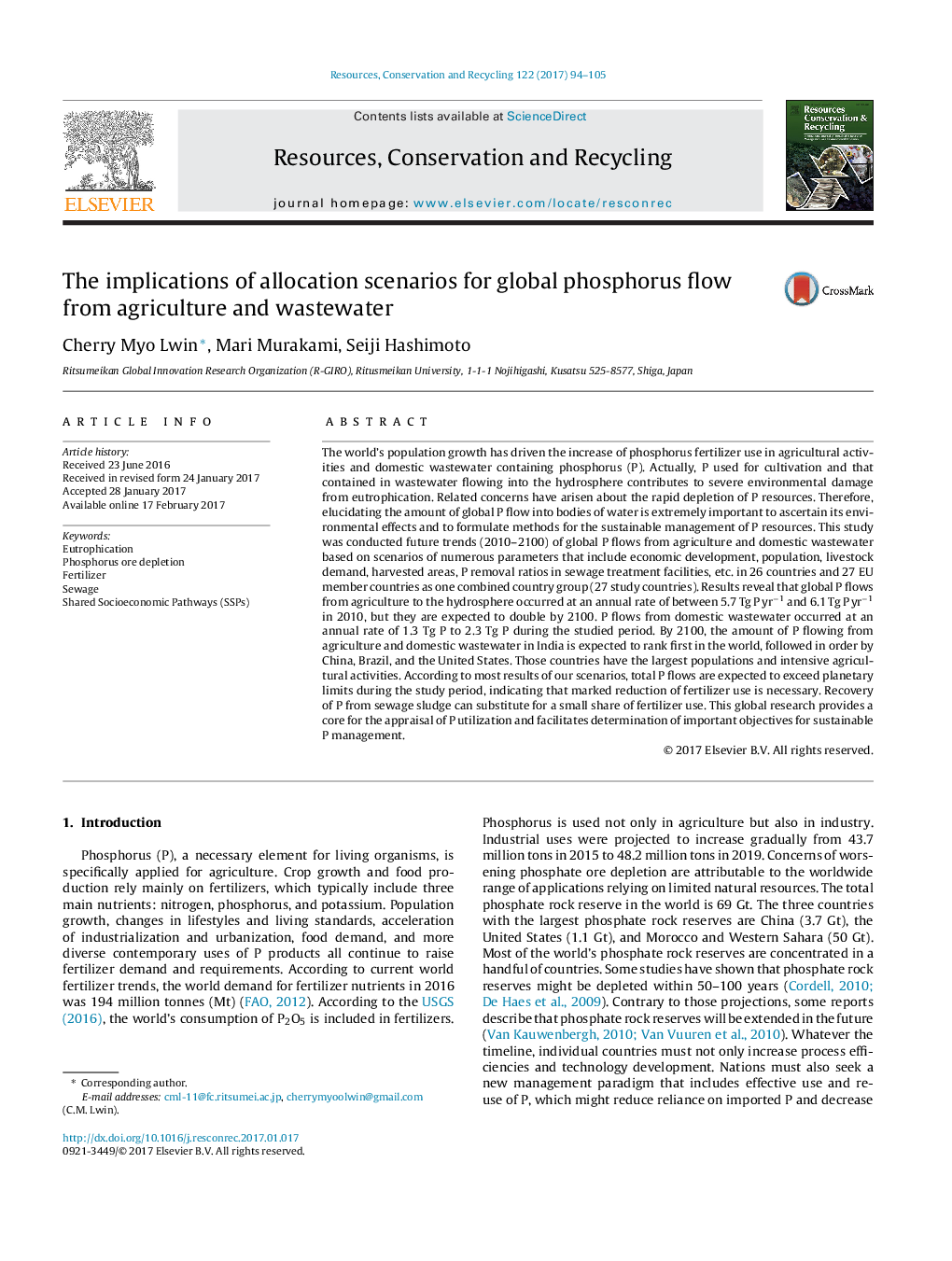| کد مقاله | کد نشریه | سال انتشار | مقاله انگلیسی | نسخه تمام متن |
|---|---|---|---|---|
| 5118780 | 1485670 | 2017 | 12 صفحه PDF | دانلود رایگان |
- Phosphorus (P) flows from agriculture and domestic wastewater are estimated.
- The P flows from India rank first, followed by China, Brazil, and the United States.
- This study describes a potential means of P recovery from sewer treatment plants.
The world's population growth has driven the increase of phosphorus fertilizer use in agricultural activities and domestic wastewater containing phosphorus (P). Actually, P used for cultivation and that contained in wastewater flowing into the hydrosphere contributes to severe environmental damage from eutrophication. Related concerns have arisen about the rapid depletion of P resources. Therefore, elucidating the amount of global P flow into bodies of water is extremely important to ascertain its environmental effects and to formulate methods for the sustainable management of P resources. This study was conducted future trends (2010-2100) of global P flows from agriculture and domestic wastewater based on scenarios of numerous parameters that include economic development, population, livestock demand, harvested areas, P removal ratios in sewage treatment facilities, etc. in 26 countries and 27 EU member countries as one combined country group (27 study countries). Results reveal that global P flows from agriculture to the hydrosphere occurred at an annual rate of between 5.7 Tg P yrâ1 and 6.1 Tg P yrâ1 in 2010, but they are expected to double by 2100. P flows from domestic wastewater occurred at an annual rate of 1.3 Tg P to 2.3 Tg P during the studied period. By 2100, the amount of P flowing from agriculture and domestic wastewater in India is expected to rank first in the world, followed in order by China, Brazil, and the United States. Those countries have the largest populations and intensive agricultural activities. According to most results of our scenarios, total P flows are expected to exceed planetary limits during the study period, indicating that marked reduction of fertilizer use is necessary. Recovery of P from sewage sludge can substitute for a small share of fertilizer use. This global research provides a core for the appraisal of P utilization and facilitates determination of important objectives for sustainable P management.
Journal: Resources, Conservation and Recycling - Volume 122, July 2017, Pages 94-105
